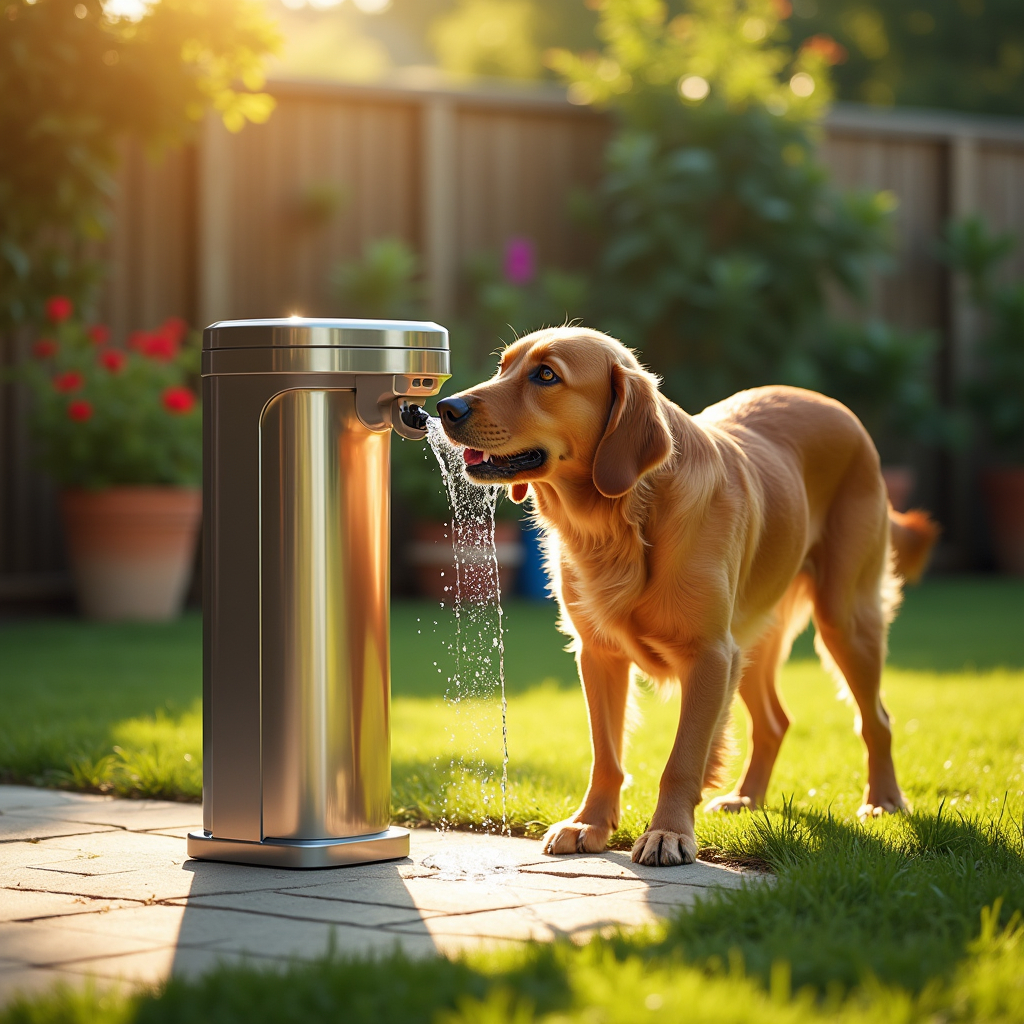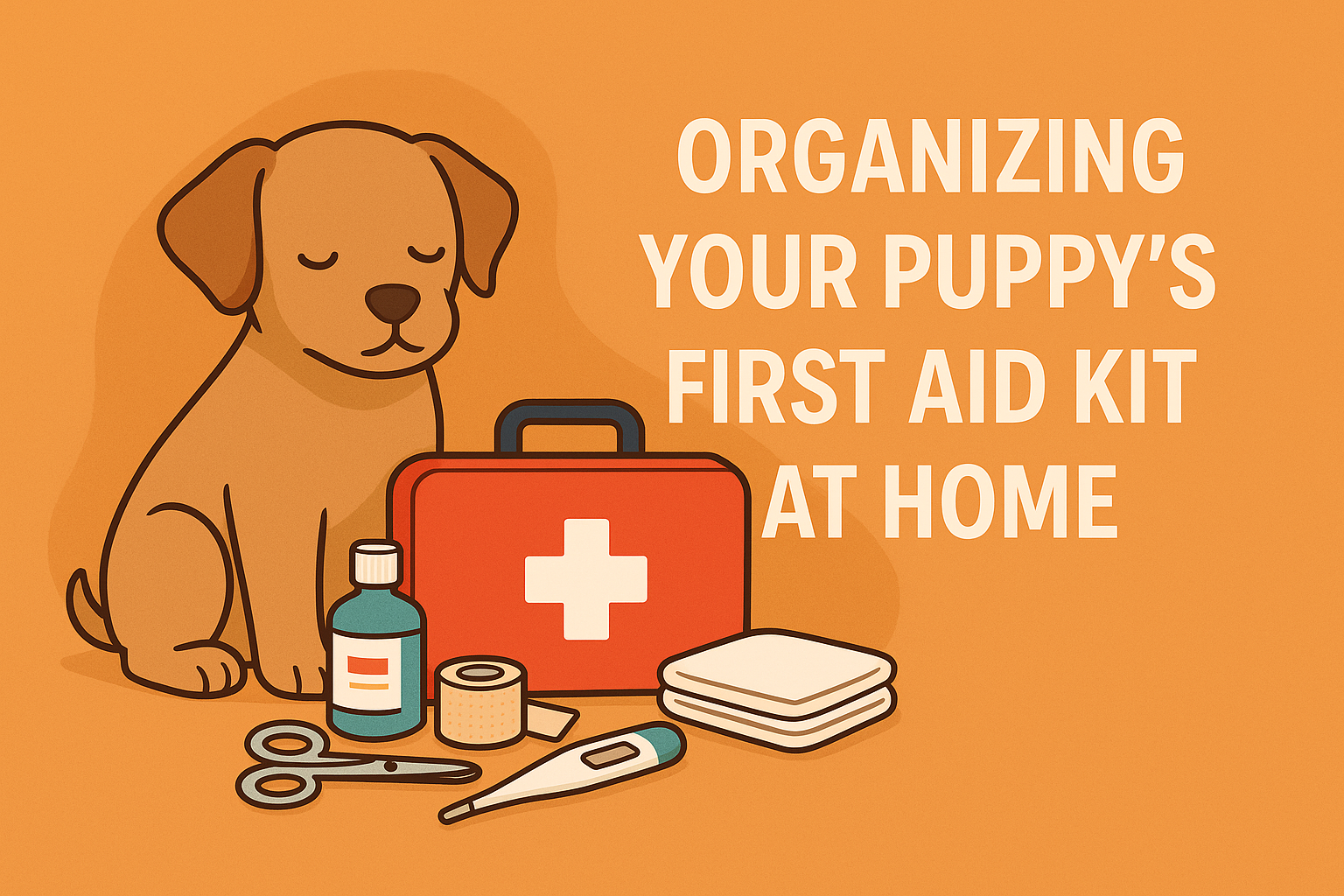Importance of Proper Hydration for Puppies
Ensuring that your puppy is well-hydrated is crucial for their overall health and development. Puppies, like humans, rely on water for essential bodily functions such as digestion, temperature regulation, and nutrient absorption. Proper hydration is vital, particularly during growth phases, to support healthy organ function and energy levels. Neglecting a puppy’s hydration needs can lead to serious health issues, emphasizing the importance of providing constant access to fresh water.
Benefits of Multiple Water Stations
Encourages Regular Hydration
Setting up several water stations throughout your home encourages regular hydration. When water is readily accessible, puppies are more likely to drink frequently, preventing dehydration. By placing water stations in commonly used areas, you can ensure that hydration becomes a natural part of their routine.
Reduces Territorial Aggression
Multiple water stations can also help reduce territorial aggression, especially in multi-pet households. Puppies often become possessive over resources such as food and water. By ensuring that there is enough water available in various locations, you decrease the likelihood of confrontations and promote a harmonious environment.
Facilitates Training and Independence
Water stations can play a role in facilitating training and fostering independence in puppies. By strategically placing water stations, you can encourage your puppy to explore different areas of your home, thus promoting confidence and independence. Additionally, consistent access to water reinforces good habits like hydrating after playtime or exercise.
Choosing the Right Locations for Water Stations
High-Traffic Areas
Placing water stations in high-traffic areas of your home ensures that your puppy always has water within reach. Kitchens, living rooms, and playrooms are ideal spots where your puppy spends the most time. These locations increase the likelihood of your puppy drinking water regularly, supporting their health and hydration needs.
Quiet Spaces for Shy Puppies
Some puppies may be shy or anxious, preferring to drink water in quieter, more secluded areas. Providing water stations in less frequented parts of the house, such as bedrooms or quiet corners, caters to these puppies’ needs, ensuring they have access to water even when feeling overwhelmed.
Outdoor Considerations
If your puppy spends time outdoors, consider setting up water stations in your yard or patio. Outdoor water stations are essential, particularly during hot weather, to prevent dehydration and heatstroke. Remember to choose shaded spots to keep the water cool and refreshing.
Types of Water Stations
Traditional Bowls
Traditional bowls are the most common and easy-to-maintain water stations. Available in various materials like stainless steel, ceramic, and plastic, they cater to different preferences and budgets. Bowls are versatile and can be placed anywhere in your home.
Automatic Water Dispensers
For convenience, automatic water dispensers provide a continuous supply of fresh water. These dispensers are ideal for pet owners with busy schedules or those who travel frequently. They ensure a steady flow of water, reducing the frequency of refills.
Portable Water Stations for Travel
When traveling with your puppy, portable water stations are indispensable. Whether it’s a collapsible bowl or a bottle with an attached tray, these options provide hydration on the go. Portable stations are perfect for trips to the park, road trips, or long walks.
Features to Consider in Water Stations
Material and Durability
When selecting water stations, consider the material and durability. Stainless steel and ceramic bowls are durable and resistant to wear and tear, while high-quality plastic is lightweight and affordable. Choose materials based on your puppy’s habits and environment.
Ease of Cleaning and Maintenance
Regular cleaning is crucial to ensure your puppy’s water remains fresh and hygienic. Look for water stations that are easy to clean, with smooth surfaces and dishwasher-safe features. Frequent cleaning prevents the buildup of bacteria and ensures safe hydration for your puppy.
Size and Capacity
The size and capacity of water stations should align with your puppy’s needs. Smaller puppies may require smaller bowls, while larger breeds might need more substantial containers. Always choose a size that accommodates your puppy’s drinking habits and household dynamics.
Tips for Setting Up Water Stations
Ensuring Stable Placement
Ensure that water stations are placed securely to prevent spills or accidents. Non-slip mats or placemats can provide stability and protect your floors. A stable setup encourages your puppy to drink comfortably without causing a mess.
Regular Cleaning and Refilling
Regularly clean and refill water stations to maintain hygiene and freshness. Depending on your puppy’s drinking habits and environmental factors, you may need to check and refresh the water multiple times a day. Cleanliness keeps your puppy’s hydration source appealing and safe.
Rotating Stations to Prevent Boredom
To keep your puppy engaged, consider rotating water stations periodically. Moving them to different spots can stimulate your puppy’s curiosity and encourage exploration. This simple change prevents habituation and keeps drinking water an engaging activity.
Common Mistakes to Avoid
Overcrowding with Too Many Stations
While multiple stations are beneficial, overcrowding your home with them can cause clutter and inconvenience. It’s important to strike a balance and place a reasonable number of water stations based on your puppy’s needs and home size.
Ignoring Station Accessibility for Puppies
Ensure that water stations are easily accessible to your puppy. Avoid placing them in spots that are hard to reach or require excessive effort. Accessibility is crucial in encouraging regular hydration and promoting independence.
Forgetting to Monitor Water Quality
Always monitor the quality of the water you provide. Stagnant or dirty water can harbor bacteria and affect your puppy’s health. According to the American Kennel Club, providing clean, fresh water is essential for your puppy’s well-being and overall health.
Conclusion
Setting up multiple water stations is a simple yet effective strategy to ensure your puppy stays hydrated and healthy. By understanding the benefits of regular hydration and choosing appropriate water station locations, you can create a comfortable environment for your puppy. Always focus on the quality, accessibility, and cleanliness of the water to make hydration a seamless part of your puppy’s day-to-day life. Prioritizing your puppy’s hydration needs fosters better health and strengthens the bond between you and your furry friend. 🐶💧# Frequently Asked Questions about Setting Up Multiple Water Stations for Your Puppy
Why is it important to have multiple water stations for my puppy?
Having multiple water stations ensures that water is accessible to your puppy at all times, regardless of where they are in your home. This accessibility promotes regular hydration, which is vital for their health. Multiple stations also help reduce aggressive behaviors around resource guarding, as puppies will have more options for drinking.
How do I determine the best location for water stations?
Strategically place water stations in areas where your puppy spends a significant amount of time, such as the kitchen, living room, or near their sleeping area. Quiet spaces are ideal for shy puppies who might prefer drinking without distractions. If placing a water station outside, ensure it’s in a shaded area to keep the water cool.
What types of materials are best for water stations?
Stainless steel and ceramic bowls are excellent choices due to their durability and ease of cleaning. These materials are less likely to harbor bacteria compared to plastic. If you choose plastic, ensure it is of high quality and BPA-free to avoid any potential health risks to your puppy.
How often should I clean the water stations?
Water stations should be cleaned daily to maintain hygiene and prevent bacterial growth. If you’re using a traditional bowl, wash it with soap and rinse thoroughly. Automatic dispensers should have their components disassembled and cleaned at least weekly, while portable stations should be cleaned after each use.
Can the placement of water stations affect my puppy’s behavior?
Absolutely. The placement can influence how comfortable and confident your puppy feels within their environment. By placing water stations in different areas, you encourage exploration and reduce any anxiety related to resource guarding. This approach can help promote a sense of independence in your puppy.
How do I know if my puppy is drinking enough water?
Monitor the water level in each station to gauge your puppy’s drinking habits. Puppies typically require about half to one ounce of water per pound of body weight daily. If you notice excessive thirst or frequent urination, it could indicate a problem requiring veterinary attention.
What should I do if my puppy doesn’t seem interested in drinking water?
Ensure that the water is fresh and the bowls are clean, as puppies may be sensitive to odors or impurities. You can also try rotating the water stations or introduce flavored water with a hint of low-sodium broth to spark interest. If disinterest continues, consult with a veterinarian to rule out any medical issues.
Should I change the location of water stations periodically?
Yes, rotating the placement of water stations can keep your puppy curious and engaged. This change of scenery can refresh their routine and encourage them to explore different parts of your home, supporting their mental stimulation and physical activity.
Is it necessary to have outdoor water stations?
If your puppy spends a notable amount of time outside, especially during warm weather, it is essential to provide outdoor water stations. These should be placed in shaded areas to prevent heat exhaustion and ensure your puppy has continuous access to fresh, cool water.








